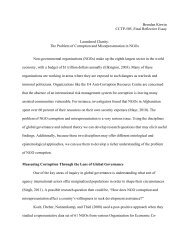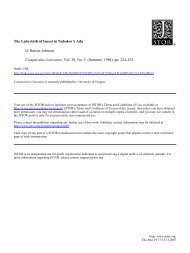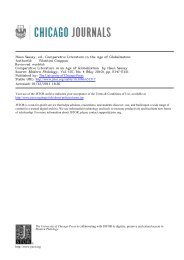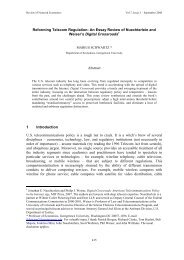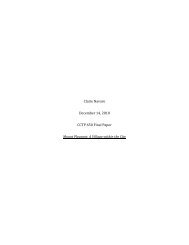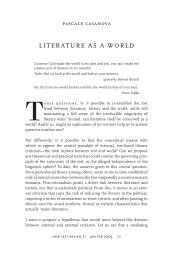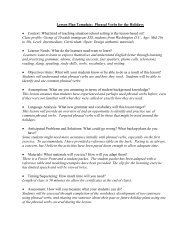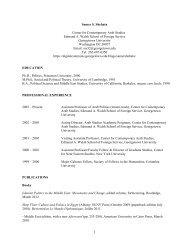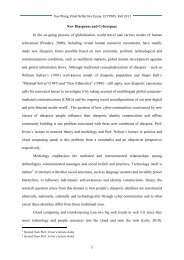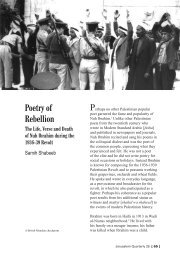Brand Tone of Voice:
Brand Tone of Voice:
Brand Tone of Voice:
- No tags were found...
Create successful ePaper yourself
Turn your PDF publications into a flip-book with our unique Google optimized e-Paper software.
J. Delin 4, I discuss conclusions, and propose some further linguistic techniques thatwould also be <strong>of</strong> use for examining the relationships between brand positionand linguistic expression.1.1 Customer leaflets for service brandsThis paper concentrates on the brochures and leaflets made available to existingand potential customers by service industries such as mobile phone companiesand banks. They encompass descriptions <strong>of</strong> accounts, facilities, and services,and are available to pick up in shops and branches. As such, they are usedboth by potential customers choosing an account or provider, and by existingcustomers looking to extend their use <strong>of</strong> existing facilities or take out a newservice, such as a different account, insurance, on-line banking, or loans.The two companies I have selected to examine are the telecommunicationsprovider Orange and the bank HSBC. These two brands were chosen because<strong>of</strong> their different ‘brand positions’: Orange positioning itself as an accessible,friendly, ‘people’ brand, and HSBC as a solid, reliable but more impersonal one.While the texts examined are derived from two different sectors, the genre <strong>of</strong>their introductory materials is similar.The texts that were analysed were an extensive 20-page brochure from Orangedescribing its services, What do you want to do? and three shorter leaflets availablefrom branches <strong>of</strong> HSBC: Bank account; Accessible banking, whatever yourneeds (about TV and PC banking); and Starting your own business. The sample<strong>of</strong> language is therefore a small one, but sufficient to generate hypotheses forfurther research on the relationship between language and brand positioning.My own work as a pr<strong>of</strong>essional consultant in commercial ‘<strong>Tone</strong> <strong>of</strong> <strong>Voice</strong>’ hasinvolved developing not just the copy for such documents, but the underlyingstrategy about how a company’s language should in general reflect their chosenbrand position. I have not, however, been involved in the development <strong>of</strong> eithercopy or strategy for any <strong>of</strong> the brands referred to in this paper.I am not making any claims that these brochures and leaflets are privilegedin terms <strong>of</strong> their power to establish brands in the minds <strong>of</strong> potential customers– they are just one <strong>of</strong> many types <strong>of</strong> document that companies use inan attempt to do so. It might be argued that leaflets and brochures are, inpractice, ignored a lot more frequently than they are read or used. Apart fromspecific studies undertaken by individual companies, and as such subject tocommercial confidentiality restrictions, there is no research available on theconsumption <strong>of</strong> such information or on its impact. However, the increasingnumber <strong>of</strong> companies that devote time and attention to extending, refreshing,and rewriting such material indicates that they are felt to be commerciallyimportant, and that they are a valuable site for expressing brand positions. To



